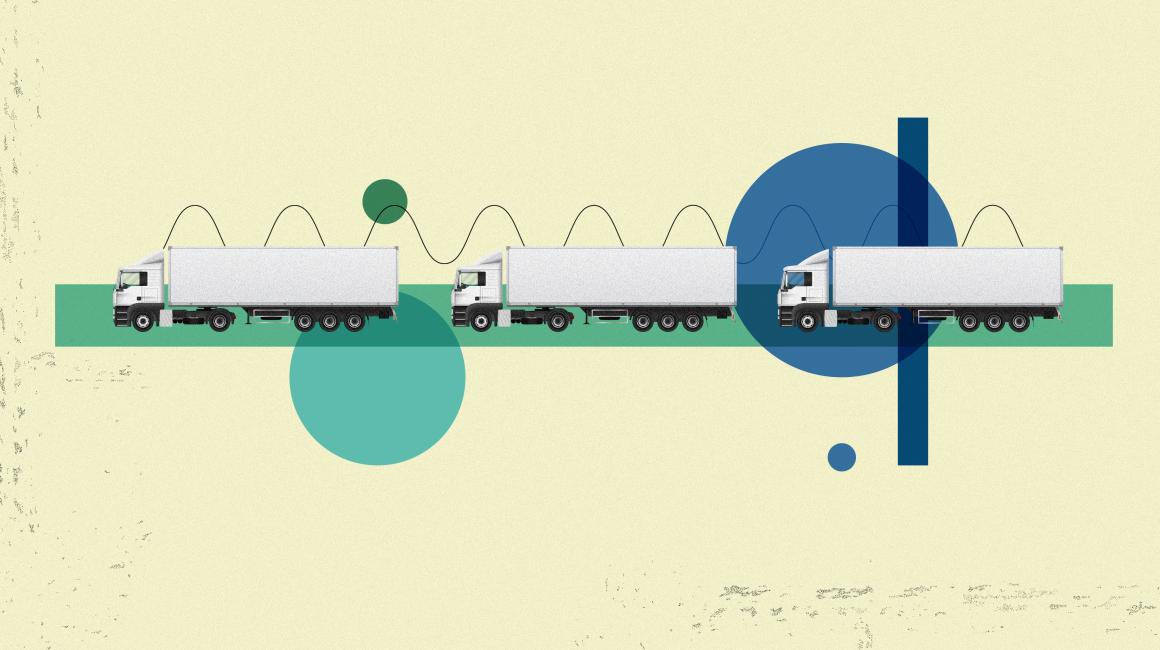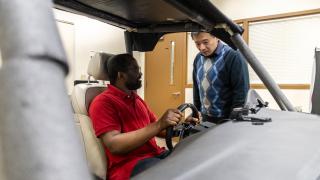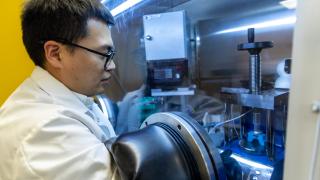
If you read our recent series on the future of autonomous vehicles, you know that Associate Professor Sridhar Lakshmanan isn’t overly bullish about the timeline for driverless technologies. The veteran autonomous vehicle researcher is not even really sure that the car companies have yet made a compelling case to consumers, and from a technology perspective, he thinks we’re at least a decade away from anything like personal driverless cars appearing on roadways. In the same breath, however, Lakshmanan is quite optimistic that certain applications of autonomous and semi-autonomous technologies are a near future proposition. A case in point: A recent collaboration between researchers at UM-Dearborn and Auburn University which Lakshmanan says clearly demonstrates an immediate market case for driverless technology.
The three-year U.S. Department of Energy-funded project, which is scheduled to conclude this September, focuses on an idea known as truck platooning. In today’s incarnation of the trucking industry, most drivers make solo runs down the highway. But in one of the team’s research platoons, a truck operated by a human driver leads three driverless trucks, which essentially mimic the first truck’s behavior in a high-tech game of follow the leader. For example, if the lead human driver brakes or speeds up, his or her truck sends an instantaneous radio message to the others to do the same so they can all maintain the ideal set spacing of 50 meters.
While it’s an interesting technology problem, Lakshmanan says the DOE’s particular interest was whether the drafting effect of platooning could result in substantial fuel savings. After 450 hours and 20,000 miles of testing on tracks and public roads in Alabama, Michigan and Quebec, the results look promising: Lakshmanan says the platoons averaged 12 percent better fuel economy. That could save the trucking industry millions of dollars in fuel every year and take a big bite out of the industry's enormous carbon footprint. “Autonomy is a really exciting proposition, but the reality is there isn’t always a clear market case for using autonomous technologies,” Lakshmanan says. “But if you’re a fleet operator running thousands of trucks, the financial savings are very substantial.” Using today’s prices for diesel, the team’s $10,000 sensor kit would pay for itself right around the 200,000-mile mark of a single truck’s 750,000-mile expected lifespan.
Notably, driverless vehicles, even ones led by a human driver, are still not legal on public roads, so deploying a platoon of semi-autonomous trucks would require changes to current regulations. But interestingly, Lakshmanan says a problem they encountered during their research led to a technology that could be implemented right now. The original controllers for their platoon trucks were designed to work on flat stretches of highway, where they performed well in Alabama. But when they drove the trucks at U-M’s American Center for Mobility test track, which features grade changes and several curves on grade, they noticed the vehicles tended to get bunched up. “Essentially what was happening was the factory cruise control on the leader truck would result in the truck slowing down as it came up the hill, and then braking as it came around the corner down the slope as it tried to maintain the set speed. And by the time the fourth truck did this, we noticed it was getting too close to the third truck,” Lakshmanan explains.
Notably, this didn’t happen when the human driver turned off the cruise control and instead anticipated the change in slope and got a running start at a hill to better maintain speed and fuel economy. This ultimately led to an improved controller — one with a “look ahead” feature that makes the cruise control better equipped to anticipate changes in terrain. But they also discovered this feature has benefits outside the truck platoon format. A solo truck equipped with the look ahead feature averaged 8-10 percent better fuel economy. And that’s something that could be deployed on trucks right now — without any major changes to regulations.
Outside of fuel economy, the team also rigorously tested the platoons in numerous so-called edge cases — less frequent highway situations that human drivers navigate with ease but prove tricky for machines. Interestingly, the platoon’s arsenal of sensors for highway navigation is pretty lean by autonomous vehicle standards: There’s no expensive vision system or lidar. Instead, they rely on the human intelligence supplied by the driver, and an overlapping system of high-powered GPS, the radar from the factory-installed adaptive cruise control, and an instantaneous vehicle-to-vehicle (V2V) communications system, which was UM-Dearborn’s contribution to the project. One by one, the team designed experiments to compromise each of these systems: jamming the V2V systems with real-world radio interference; running the trucks through areas where GPS coverage was spotty. And in each edge case, the platoon navigated the situations safely. “We discovered that if one system went down temporarily, the others were sufficient,” Lakshmanan says. “So with that kind of redundancy, it’s a very resilient system. And because we don’t have to use the more expensive sensors, it’s a far more affordable solution for a fleet operator.”
All this suggests to Lakshmanan that truck platooning is an idea whose time has come. As they wrap up the final work on their current project, they’re now hoping to collaborate with the State of Michigan’s Office of Future Mobility and Electrification and a commercial fleet operator for a real-world pilot. “With these kinds of results, we definitely feel like we’ve scratched the surface on something big. Now it’s time to dig deeper.”
###
Interested in a career working with autonomous vehicles? One of Lakshmanan’s graduate students on this project now works in the connectivity group with Ford Motor, Co. as a result of this research. As one of the country’s leaders in AV research, we have many options for both undergraduate and graduate students. If you want to reach out to Professor Lakshmanan directly, his email is [email protected].



